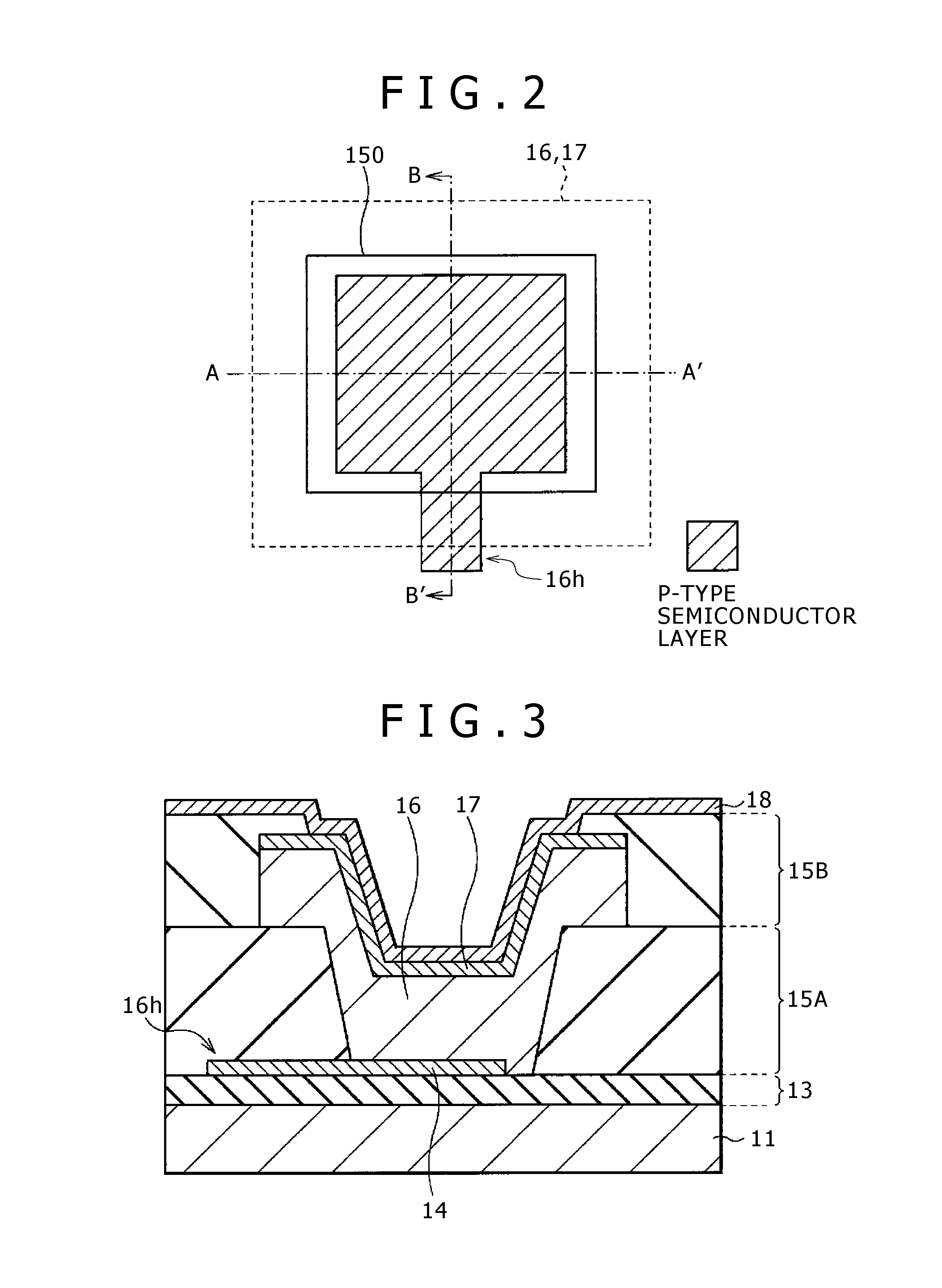Photoelectric conversion element having a plurality of layered semiconductors and method for manufacturing same
a technology of photoelectric conversion element and semiconductor, applied in the direction of electrical apparatus, semiconductor devices, radio frequency control devices, etc., can solve the problems of increasing dark current and crack generation, and achieve the effects of increasing film thickness, increasing optical sensitivity, and reducing the number of cracks
- Summary
- Abstract
- Description
- Claims
- Application Information
AI Technical Summary
Benefits of technology
Problems solved by technology
Method used
Image
Examples
application example (
4. Application Example (example of photoelectric conversion device and radiation imaging device using photoelectric conversion element)
embodiment
[0032]FIG. 1 shows the schematic configuration of a photoelectric conversion element 10 according to one embodiment of the present disclosure. The photoelectric conversion element 10 is a PIN (Positive Intrinsic Negative) photodiode obtained by interposing a non-doped i-type semiconductor layer (intrinsic semiconductor layer) between a p-type semiconductor layer and an n-type semiconductor layer.
[Whole Configuration of Photoelectric Conversion Element 10]
[0033]The photoelectric conversion element 10 has a p-type semiconductor layer 14 (first semiconductor layer) in a selective area over a substrate 11 composed of e.g. glass with the intermediary of an insulating film 13. Over the substrate 11 (specifically, on the insulating film 13), a first interlayer insulating film 15A having a contact hole 150A (through-hole) opposed to the p-type semiconductor layer 14 is provided. An i-type semiconductor layer 16 (third semiconductor layer) is provided on the p-type semiconductor layer 14 in ...
modification examples 1 and 2
[0062]FIG. 13 shows the sectional configuration of a photoelectric conversion element according to modification example 1. FIG. 14 shows the sectional configuration of a photoelectric conversion element according to modification example 2. These photoelectric conversion elements of modification examples 1 and 2 have the p-type semiconductor layer 14 over the substrate 11 with the intermediary of the insulating film 13 and the i-type semiconductor layer 16 is provided in a contact hole 150C of a first interlayer insulating film 15C, similarly to the photoelectric conversion element 10 of the above-described embodiment. On the i-type semiconductor layer 16, the n-type semiconductor layer 17 is provided in accordance with the surface shape of the i-type semiconductor layer 16. In such a configuration, the i-type semiconductor layer 16 has a corner part that is not in contact with the p-type semiconductor layer 14. For simplification, diagrammatic representation of the second interlayer...
PUM
 Login to View More
Login to View More Abstract
Description
Claims
Application Information
 Login to View More
Login to View More - R&D
- Intellectual Property
- Life Sciences
- Materials
- Tech Scout
- Unparalleled Data Quality
- Higher Quality Content
- 60% Fewer Hallucinations
Browse by: Latest US Patents, China's latest patents, Technical Efficacy Thesaurus, Application Domain, Technology Topic, Popular Technical Reports.
© 2025 PatSnap. All rights reserved.Legal|Privacy policy|Modern Slavery Act Transparency Statement|Sitemap|About US| Contact US: help@patsnap.com



